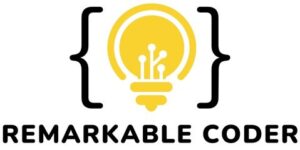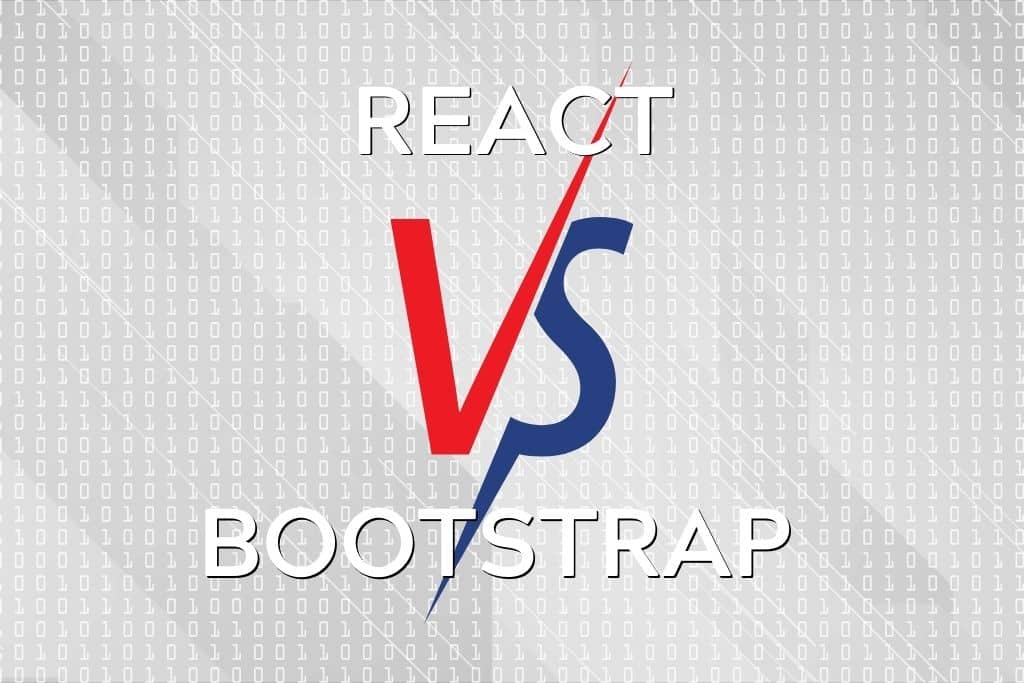Comparing React and Bootstrap is like deciding which one is better between apples and oranges. There are two different things but often used to achieve similar effects on the frontends of interactive web apps. In some cases, React and Bootstrap are used together.
Talking of React vs Bootstrap- what is the difference? Firstly, React is a JavaScript library that is used to create interactive elements while Bootstrap is a CSS framework for UI design. React handles scripting and DOM traversals while Bootstrap is primarily used to create visual elements such as buttons, sliders, and menus.
It is possible to integrate Bootstrap into React via a content delivery network (CDN), or by importing it as a dependency. This way, developers can take advantage of the built-in classes and components of Bootstrap to speed up their React app’s development. Bootstrap is a mobile-first framework that ensures consistency across a wide range of portable devices, but it works equally well for desktop platforms.
| React | Bootstrap | |
| What It Is | An open-source JavaScript library that is used to build UI components for interactive websites. | A popular mobile-first CSS framework for developing responsive websites and web apps. |
| Made By | Jordan Walke at Facebook in 2011. | Mark Otto and Jacob Thornton at Twitter in 2010. |
| How It Works | Follows the declarative programming paradigm with reusable components. Each component contains both the logic and UI. | Each view consists of a grid layout with rows and columns that contain UI elements. The layout can automatically detect and adapt to a user’s screen size and orientation. |
| Usage | Used to create interactive single-page applications for web and mobile. It can even be used for backend tasks in combination with Node.js. | Used to create UI components for responsive mobile-first apps. Only for frontend use, and doesn’t concern itself with logic. |
| Features | Virtual DOM, JSX, one-way data binding, reusable components, and declarative programming. | Responsive design, consistent user experience across platforms, includes design templates and supports optional JavaScript plugins. |
| Performance | Changes to the view are rendered quickly thanks to a virtual DOM system. | Generally quite good, can be improved with optimized JavaScript and CSS code (as well as image compression). |
| Scalability | React components can be merged, extracted, and reused quite easily. Its one-way data binding and virtual DOM also help with scalability. | Bootstrap’s customizable framework and support for various plugins make it quite scalable. It can also work in combination with libraries like React. |
| Community | Has a very active community. Users of React will find extensive documentation and a wide selection of npm packages. | Its popularity, age, and open-source license make Bootstrap one of the most user-friendly CSS frameworks, with tons of documentation. |
History of React
Compared to many other frameworks and libraries on the market, React is slightly younger. But not that young since it was initially conceived in 2011 by Jordan Walke, a Facebook engineer. Jordan was trying to create a JavaScript library that would make the process of updating and maintaining code much simpler.
The need for React became apparent when developers working on Facebook Ads started to struggle with its codebase. They needed something quick, while also trying to meet demands for a rapidly increasing userbase. And that’s when ReactJS was born.
Jordan took inspiration from XHP, an HTML extension for PHP. With XHP, developers could use XML syntax to create reusable HTML elements for their frontends. React follows a similar principle, with its reusable components that package UI and logic into one file.
JSX combines JavaScript with HTML, giving developers the scripting power of JS but with the convenience of a template language. React was adopted by a wide range of companies around the world for its flexible, yet powerful nature. Facebook used React for Instagram in 2012 and made the library open-source in 2013.
History of Bootstrap
Bootstrap had pretty humble beginnings, starting out as a simple side-project between a designer and developer at Twitter. As Mark Otto said, it was a “resource to help make better looking and more usable internal tools at Twitter”. Jacob Thornton and Mark Otto later realized that it would be an awesome framework to help creative folks around the world create responsive web apps.
So they made it open source in 2011. Ever since then, Bootstrap has gone through a whole bunch of revisions and upgrades. Currently, the latest version is Bootstrap 5 which removed jQuery dependence and focuses on JavaScript instead.
Bootstrap apps recognize the size and orientation of a visitor’s screen. Based on this, dynamic changes are made to the view almost immediately. Bootstrap was designed from the start to be easy and consistent, so anybody could integrate it into an existing project.
Comparing How They Work
React is a library that handles all interactivity within the view layer in the Model-View-Controller (MVC) architecture. MVC isn’t a framework in itself, but a way of defining how applications should be designed. React at its core is a way to manipulate the DOM tree.
The DOM tree is basically an API for XML and HTML documents, detailing the structure of a webpage. Each object and event within a page occupies a node on the DOM. This data is then stored in memory.
React speeds up the process by which this data is accessed and changed based on the user’s interactions. Instead of changing the actual DOM, React creates a virtual copy within memory. Then it compares the “before” and “after” states of this virtual DOM to decide whether the real one needs updating.
Performance is sped up since the entire DOM tree doesn’t have to be rebuilt every time something changes on the page. React only updates the dynamic or necessary nodes within a DOM. This is called “reconciliation”.
To simplify the process of coding apps, React uses a declarative programming paradigm. This basically means that you tell your code what to do, rather than explicitly detail how you want it done. It’s essentially an abstraction layer on top of regular code.
And to accomplish this goal, React components are needed. Each component is an encapsulated block with UI and logic that manages and declares its own state. This allows developers to focus on the data, rather than state management within the DOM.
Now, let’s compare all of that to Bootstrap. Which is basically a UI design framework. With Bootstrap, front-end developers spend less time on CSS for their web app and more time on everything else.
With a bunch of templates and prebuilt components, Bootstrap gives developers all the tools they need to rapidly develop a nice-looking web app. It is flexible, thanks to the excellent browser compatibility and support for a wide range of plugins/ APIs. Plus, Bootstrap can be used with your favorite IDE.
Unlike React, Bootstrap isn’t a means to script interactive events or manipulate the DOM. It offers a grid layout to insert things like buttons, forms, menus, tabs, etc., and create the visual style for a page. It can also be used in combination with React.
Comparing Their Usage
React is a frontend library for developing complex and powerful user interfaces that render changes to the view at a frequent rate. Its performance, flexibility, and modular nature make React the perfect choice for dynamic websites with constantly changing states. You can implement React into certain segments of a website.
Like expandable accordion sections, navigational features that change based on user activity, dynamic inputs, and interactive buttons. React is also a good fit for instant messengers, video streaming apps, chats, and other such niches that require frequent updates with a responsive layout. Some of the big companies that use React are Airbnb, Uber, Facebook, Pinterest, Netflix, and Instagram.
Whenever you need a responsive web app that works consistently across a wide range of devices (especially mobile), Bootstrap is a good choice. It allows for quick prototyping and testing which saves development time. Bootstrap has a grid system that simplifies the process of creating an intuitive and nice-looking interface.
Bootstrap isn’t the lightest framework for mobile apps, nor is it the most customizable. But it is consistent and easy to implement, which is why so many developers prefer it. Some of the big companies that use Bootstrap are Spotify, Udemy, Lyft, LinkedIn, and StackShare.
Comparing Their Features
The features that stand out in React are its virtual DOM and use of JSX. Then there’s imperative programming which acts as an abstraction layer above the actual DOM manipulation. React also favors the use of one-way data binding (although two-way data binding is supported) to simplify code updates and maintenance.
Bootstrap has its own unique features like the grid system, syntactically awesome style sheets (SASS), and more. It also has a bunch of stuff typical to frameworks, such as a huge library of predefined classes and templates. Bootstrap makes it easy to prototype ideas and concentrate on the functionality of a web app without worrying too much about its style.
Comparing Their Scalability
One of the main reasons to use React is its scalability. It works for small projects with limited scope and low budgets. However, React can also be scaled up to support massive websites with complex features that get lots of traffic.
Since React can be combined with other libraries, its functionality can be extended to rival that of a proper framework. React components are modular and reusable. Which makes it easy to reimplement existing functionality without writing new code.
Bootstrap is also modular and easy to scale up. The preexisting classes can be customized based on your needs. And the grid system ensures a consistent experience across multiple platforms as your project grows in size.
Conclusion
Hopefully, this article gave you a better understanding of React vs Bootstrap and what makes both of these web development tools unique. They are not analogous, which is to say you don’t decide between the two while developing an app. You can use either, or both depending on the task.
React is a great way to create high-performance single-page applications that update the view frequently. Such as social media sites, live chats, instant messaging apps, etc. And Bootstrap helps you create a responsive UI with easily customizable components.
The templates for many of these items like buttons, carousels, menus, sliders, etc. are included within the framework. A grid layout ensures easy alignment of each component. Bootstrap also makes sure that your website/ web app looks consistent across multiple screen sizes and orientations.

